Istanbul
I love Turkish food, and Istanbul is one city where it’s easy to try lots of local authentic dishes fairly cheaply.
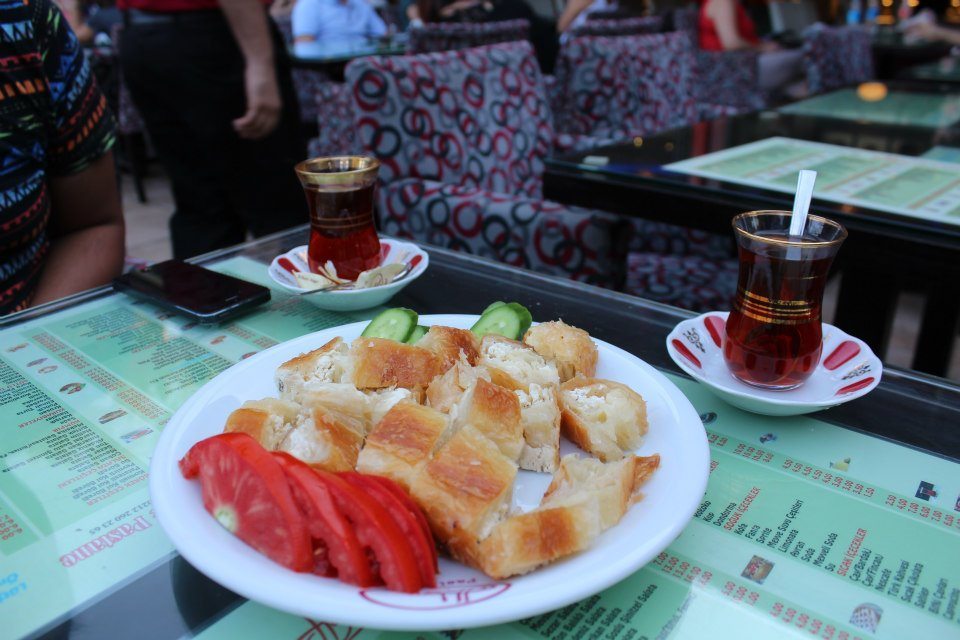
Borek and tea at Hakan Pastanesi
On our fourth day in Istanbul, we ventureed to the Asian side of Istanbul. A large shopping and eating area across the Bosphorus is called Kadirkoy, while there is a nondescript suburb on the European side (near where we were staying) called Karakoy, so you can guess where we ended up on our first attempt to cross the bridge. Eventually we did cross the Bosphorus, across one of the huge cable bridges that afford breathtaking but all-too-fleeting views of the waterway. Driving off the bridge a blink-and-you’ll-miss-it sign says “Welcome to Asia”, and then its back to the motorways and suburbs that are typical of any big city. In some ways it’s a shame that the two sides are so similar – it would be a neat experience to cross continents and experience a notable change in culture from “European” to “Asian” or “Middle Eastern”, but in reality of course you are still very much within the same country and city.
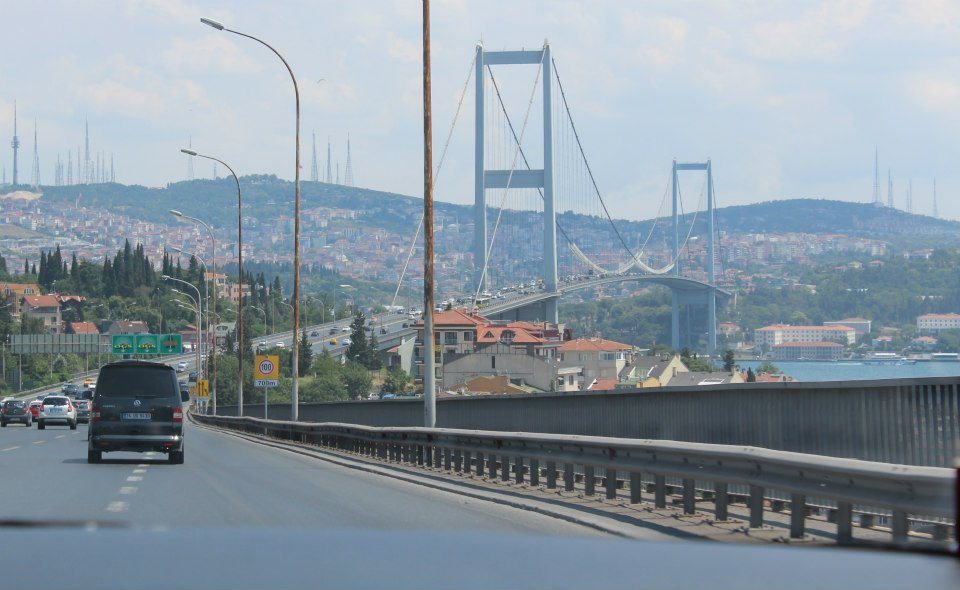
Driving towards Asia on the Boğaziçi Bridge
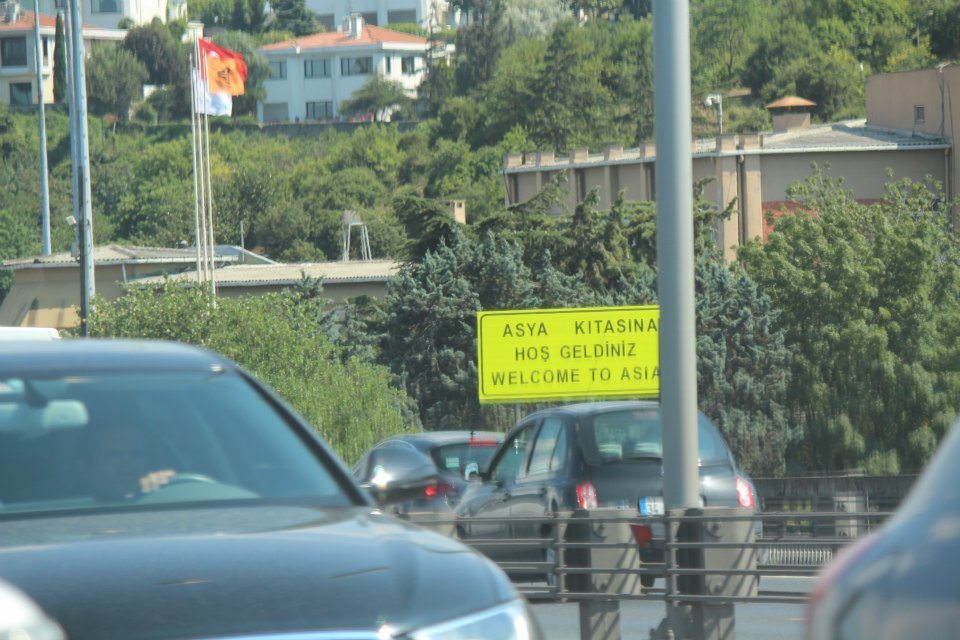
Welcome to Asia, Istanbul!
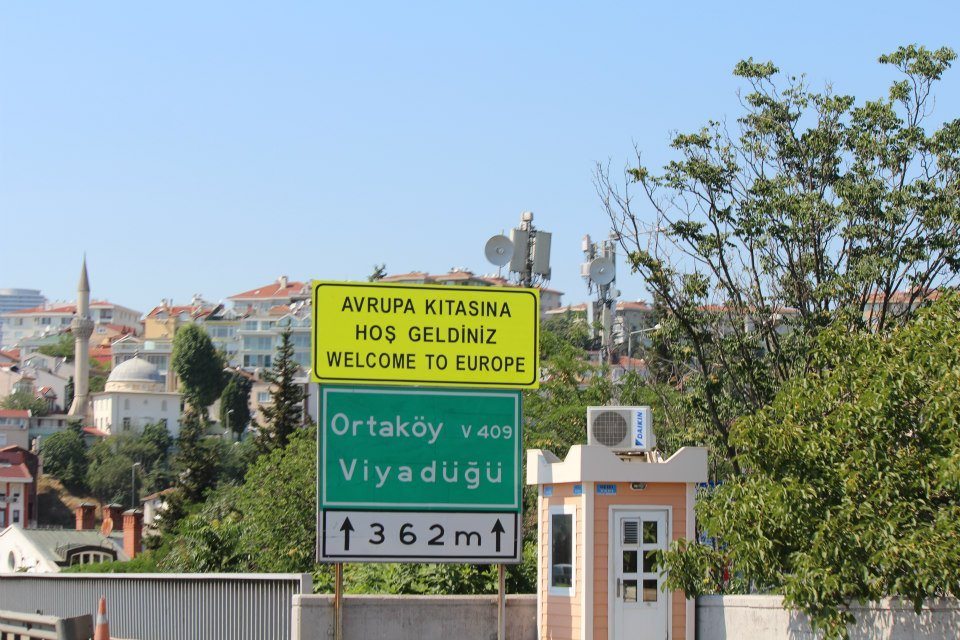
Welcome to Europe, Istanbul!
At Kadirkoy we ate Turkish kebap (kebab); one semi-spicy variety and one with ground lamb and crushed pistachios – it was every bit as mouthwatering as it sounds! The previous day we had eaten Iskander kebap (“Alexander kebab”), a personal favourite of mine. Think pieces of pide in a shallow pan, topped with grilled lamb, then slathered with tomato gravy, mild spices and a dollop of sour yogurt. Simply amazing, and the Iskander kebap at Metropolis Cafe (also known as the Babylonia Garden Terrace Restaurant) was a perfect antidote to my craving! Was also reunited with my old friend Turkish apple tea – as delicious and memorable as ever.
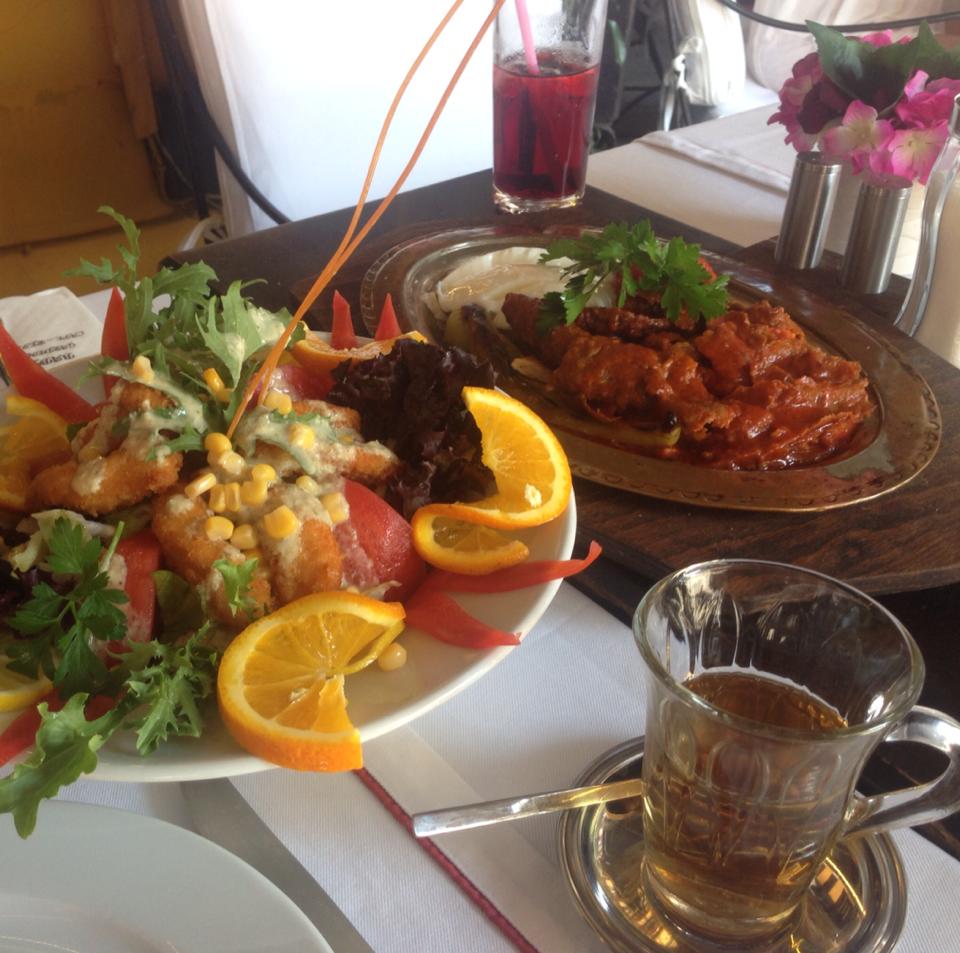
Iskander Kebap, Chicken Salad and Turkish Apple Tea at Metropolis Cafe
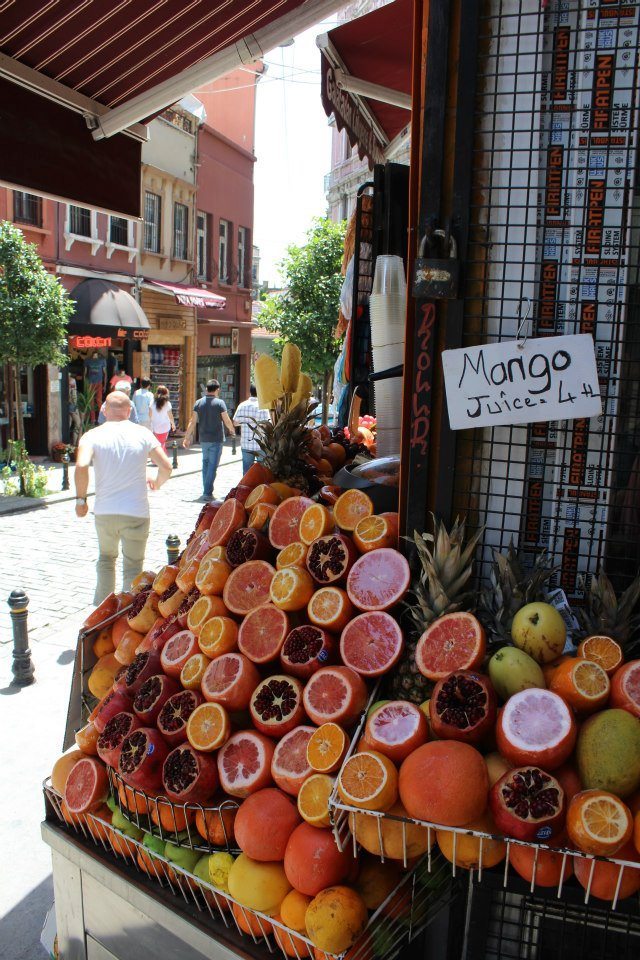
Juice vendors in Beyoglu, Istanbul
One night we had also eaten at Hakan Pastanesi in Beşiktaş, near the hotel, where we tucked into borek (a traditional breakfast pie with cheese and meat), but Hakan’s best dish was easily the gozleme; flat bread rolled with cheese, spinach and cooked on a hotplate by a woman who looks like she knows her stuff! We finished up with limonata (a refreshing lemon cordial), traditional Turkish tea (served without milk) and baklava – delicious!!! Our breakfasts were taken at the W Hotel, where a typically Turkish selection was served up alongside more conventional offerings, and new age music which seemed to feature some woman yelping as if she was being poked with a rod. A Turkish breakfast is almost Eastern European in its content, with an emphasis on cold cuts (although no pork), creamy cheeses and crusty breads, with different fruit juices like sour cherry and watermelon.
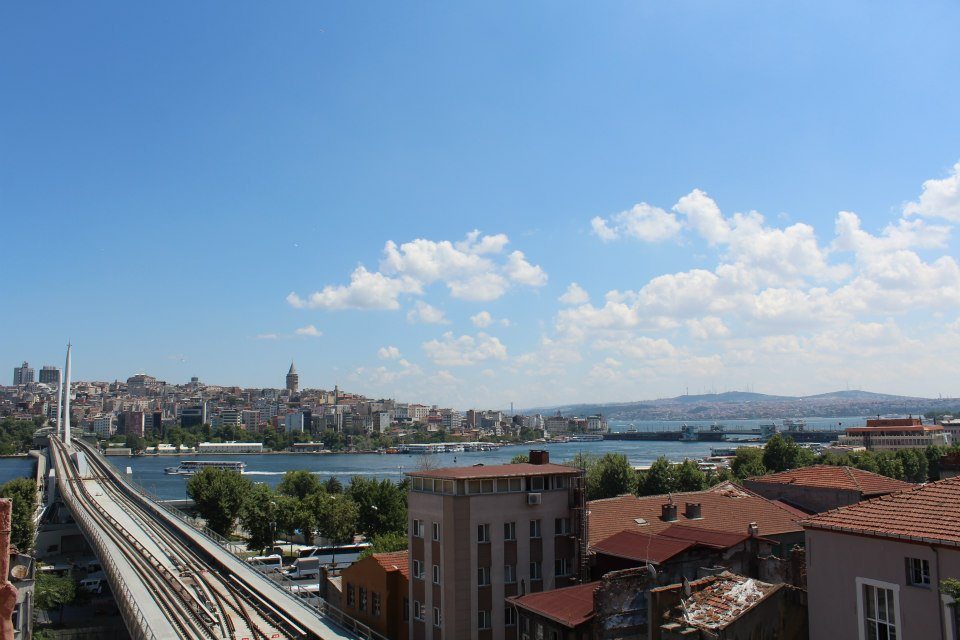
Looking across the new Haliç Bridge from near Sulemaniye Mosque towards Beyoglu, Istanbul
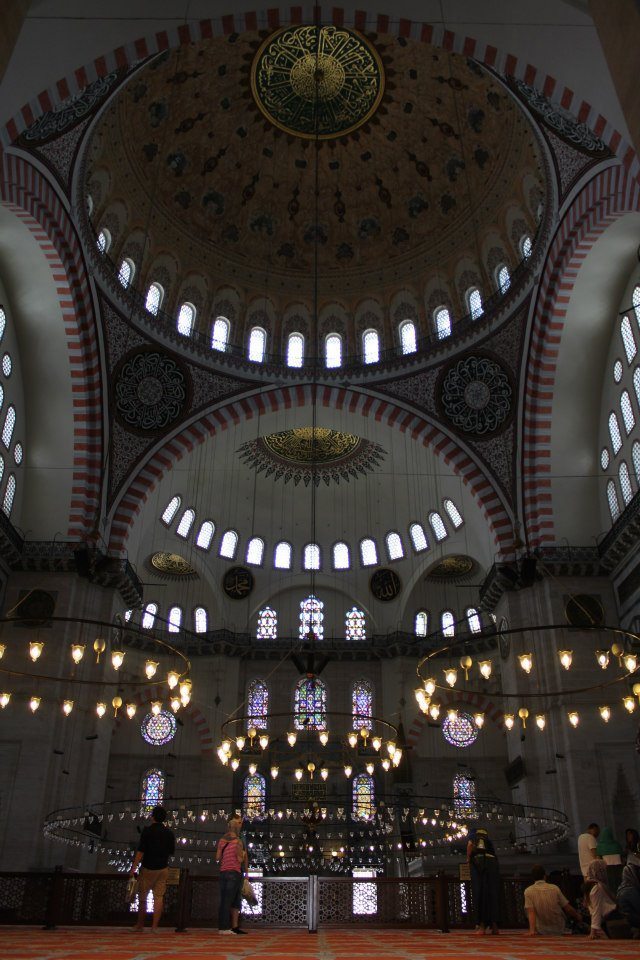
Sulemaniye Mosque, Istanbul
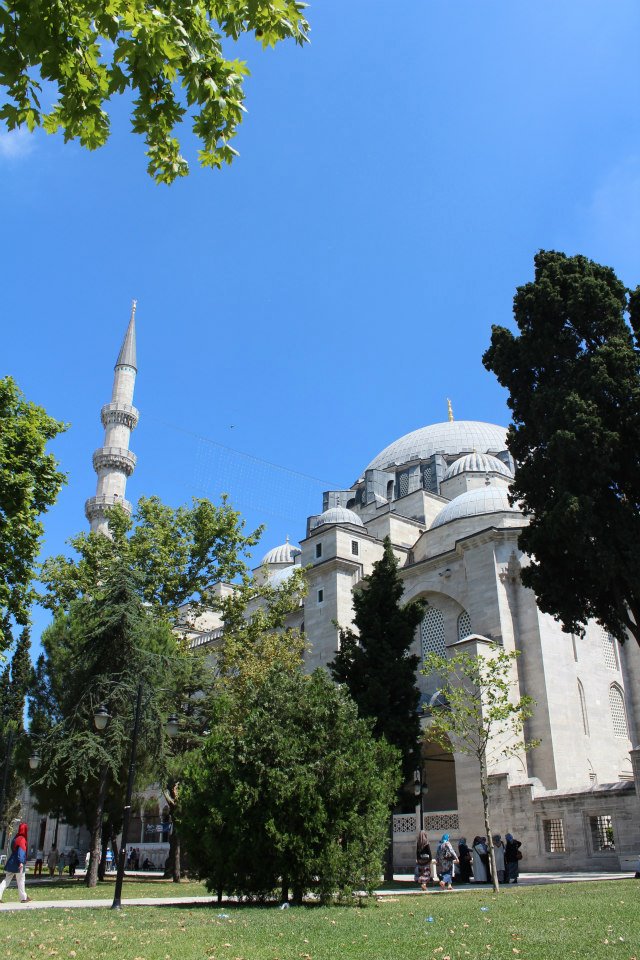
Sulemaniye Mosque, Istanbul
On our last day in Istanbul, I made use of the controversial new metro line from Taksim Square to near Sultanahmet. It was controversial because it required a bridge to be built which altered the city’s skyline, obscuring views of the city’s biggest mosque, Sulemaniye Mosque. it did, however, provide a convenient metro station just 500 metres from the mosque, and that’s exactly where I was headed. Sulemaniye Mosque isn’t as well known in the west as the ‘Blue Mosque’, but its arguably more important. Besides being an important place of worship for countless Istanbulis, its grounds also contain the tomb of Suleiman the Magnificent, the 16th century sultan who was credited with expanding the Ottoman Empire deep into Europe and up to the gates of Vienna. The tomb looks rather solid form the outside, but peering through the closed glass doors, I could only spy a fairly empty-looking chamber, with the tombs covered in a fine layer of dust. I walked back and into the beautiful mosque. The interior didn’t look as big as that of the Sultan Ahmet Mosque, but I was assured that this mosque was the larger of the two. The incredible calligraphy work on the ceiling however was lavish, and the whole experience was much more enjoyable for the fact that there were relatively so few tourists there.
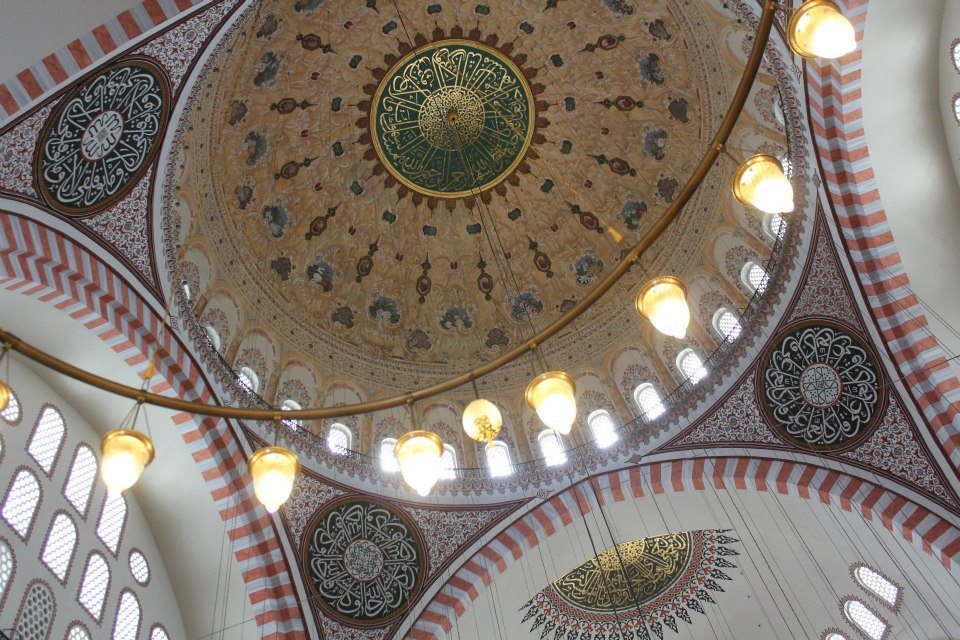
The dome of Sulemaniye Mosque, Istanbul
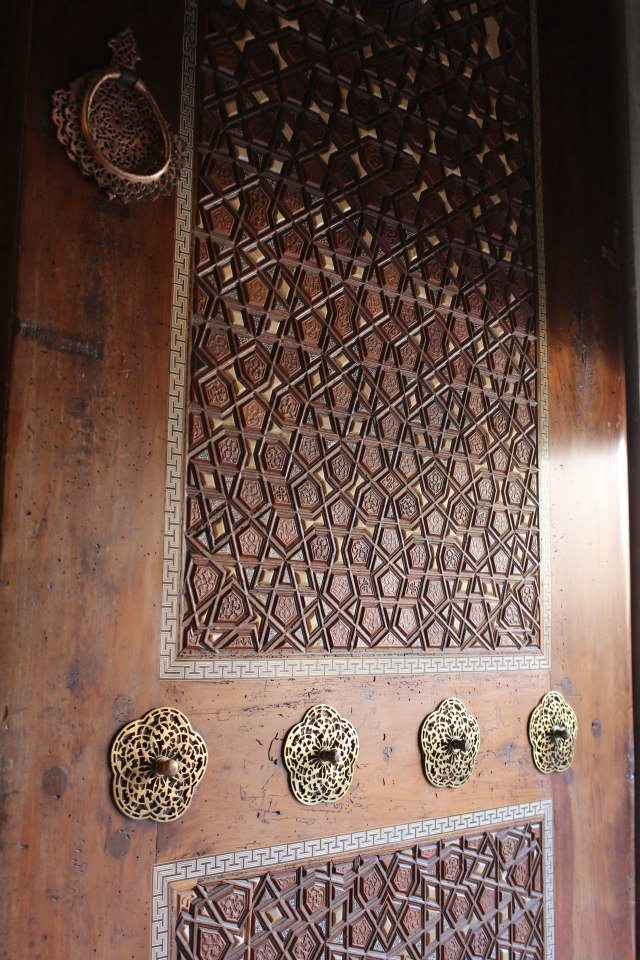
Door to Sulemaniye Mosque, Istanbul
Walking down the hillside from Sulemaniye Mosque towards the Haliç Bridge Metro Station, I picked up one last limonata before heading back to the hotel. I stood on the platform, waiting for the train, and looking out beyond the mosques to the Bosphorus and over to the Asian side of the city. No doubt, Turkey has some serious identity issues, and they only seem to be getting deeper as time goes by. It also carries its identity off fairly effortlessly and seamlessly however; while there is definitely some social conflict between “European Turkey” and “Middle Eastern Turkey”, it’s also worth asking if this even matters. Perhaps being not quite western, but not quite eastern, but a little bit of both is what Turkey actually is. If one casts labels aside, perhaps all the anxiety over whether Turkey is European is just that; inconsequential anxiety. As a disaffected Turkish friend of mine once asked “why do we have to be European or Asian? Isn’t being Turkish enough?”
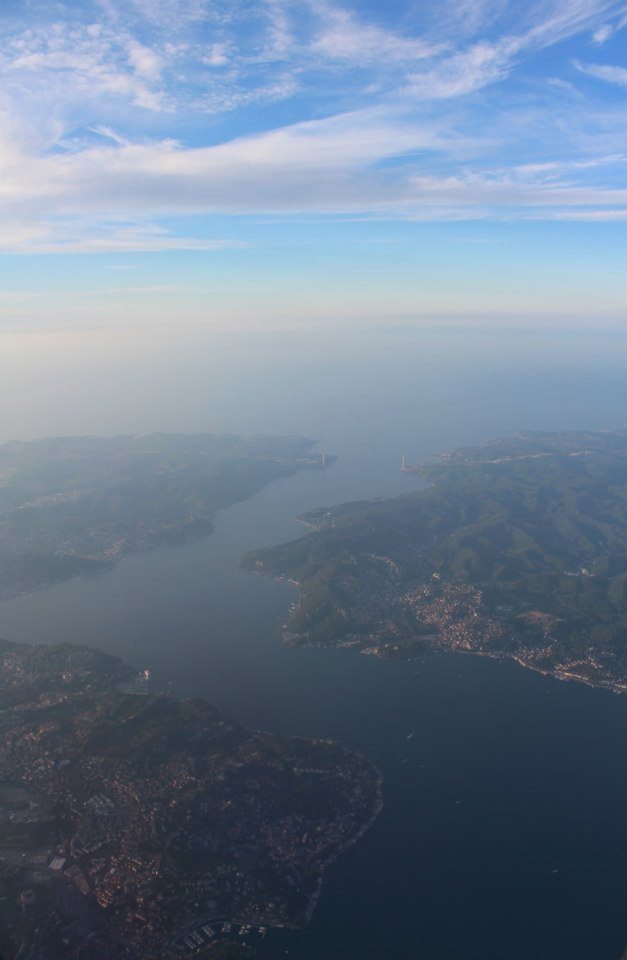
The Bosphorus, with European Turkey on the left, and Asian Turkey on the right. In the distance is the Black Sea.
Essential Stats
Culture shock: 5/10
Language difficulty: 6/10
Quality of food: 8/10
Cost: 5/10
Physical demand: 4/10
Advice and warnings
Istanbul is not a dangerous city, but it pays to know three important things. Firstly, like any large city it has its own share of touts and scammers in the touristy areas. Use common sense, and if you go to the bazaar, bargain hard. Secondly, as the largest city in a nation at the crossroads (in more ways than one), Istanbul sees occasional bouts of political violence – this usually takes the form of demonstrations, but in June 2013 turned violent. If you see a protest, stay away, and if you are in an area with a heavy police presence (like Taksim Square), use common sense – no taking happy snaps of police posts or guarded government buildings. Finally, despite appearances (and perhaps ambitions), Turkey still has a conservative undercurrent owing to its Islamic heritage. There’s no need to wear special clothes or drastically alter one’s behaviour in the street, but remember that not all Turkish people share the same Western liberal outlook, and that a mosque is still a sacred place and does call for modest clothing and a level of decorum.
Check Smart Traveller or the British Foreign Office for more comprehensive warnings.
Visas
Australians purchase a Turkish visa on arrival at Istanbul’s Ataturk International Airport for €50. Pakistanis must pay PKR 6000 – the process takes around one month and a long list of documents is required. See the Turkish Embassy in Islamabad for details. Applications in India cost INR 3850, and could take several weeks. Apply through the Indian Turkish Visa VFS Service.
Getting there and around
Emirates flies to Istanbul via Dubai daily.
Melbourne (from $1,644 return)
Lahore (from PKR 82,254 return)
Sydney (from $1,693 return)
Chennai (from INR 62,265 return)
Accommodation
We stayed at the pleasant W Hotel. If you’re looking for something a bit easier on the wallet, there are plenty of great budget and economy options available through HostelWorld.com.




I see that local cuisine is so healthy and nutritious in Istanbul. Would love to dig into a plate of local bread, seafood, spicy sauces and veggies.
It’s soooo good!! You’ll seriously have to come here one day!!! 😀 Thanks for reading 🙂
I love Turkish food but have never travelled to Turkey myself and would love to try the authentic cuisine out there! Some of these practical tips are really helpful to keep in mind if I plan a future trip there!
Glad I could be of assistance! I’d love to hear about your experience when you eventually make the trip!! 😀 Thanks for reading!
Turkish Apple Tea? So, how was your experience of tea with kebap?
The tea was delicious – subtly sweet… and sort of cleansing after the heavy taste of the kebaps. The kebaps were nice, but the Iskander kebap is my personal favourite 🙂